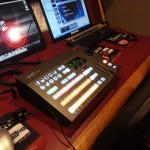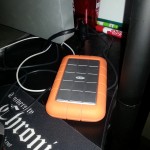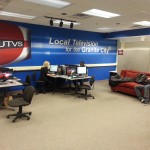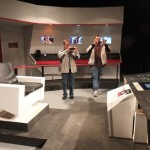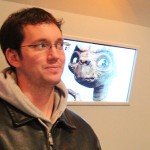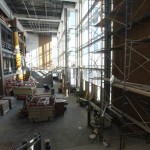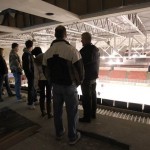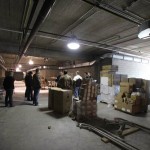 Last Friday ITS held a Creative Friday event where there was a viewing of author Susan Cain’s TED talk, The Power of Introverts (see the video at my earlier post here). The viewing was followed by a guided discussion with faculty Suzanne Stangl-Erkins and Wendy Bjorklund. I’ve been fortunate enough to sit in on a few talks from Suzanne and Wendy in the past and they always have insightful thoughts. This time they talked issues that can arise when extroverts are managed by an extrovert and conversely the benefit of an introverted manager allowing extroverted employees to run with their ideas. They also talked about the disadvantages to modern work spaces that they explained can have both negative psychological and physical impacts. Another area they addressed was the adverse impact that impromptu group work has. They explained that often a few individuals dominate the discussion and good ideas don’t end up being brought forward by the majority of the group. They gave a great method for collaboration that involved the distribution of index cards and idea ranking. I hope that we can test this process as a part of a future collaborative event.
Last Friday ITS held a Creative Friday event where there was a viewing of author Susan Cain’s TED talk, The Power of Introverts (see the video at my earlier post here). The viewing was followed by a guided discussion with faculty Suzanne Stangl-Erkins and Wendy Bjorklund. I’ve been fortunate enough to sit in on a few talks from Suzanne and Wendy in the past and they always have insightful thoughts. This time they talked issues that can arise when extroverts are managed by an extrovert and conversely the benefit of an introverted manager allowing extroverted employees to run with their ideas. They also talked about the disadvantages to modern work spaces that they explained can have both negative psychological and physical impacts. Another area they addressed was the adverse impact that impromptu group work has. They explained that often a few individuals dominate the discussion and good ideas don’t end up being brought forward by the majority of the group. They gave a great method for collaboration that involved the distribution of index cards and idea ranking. I hope that we can test this process as a part of a future collaborative event.
We ran out of time to get into a deep discussion on the topics, but there were some holes that I was hoping we could have discussed. Here are some of the questions I still have.
- I’ve noticed benefits to a collaborative work environment. Do the experts see value? What about the creative environments popping up at Google, Citrix, and other big companies?
- What are approaches to build environments that support both introverts and extroverts?
- If there are issues with extroverted managers managing extroverted employees, are there also benefits? In my experience there certainly are. What are mechanisms to minimize the negatives? What can be done to capitalize on any positive elements?
- If impromptu group work and brainstorming has a negative impact on ideas, do group discussions in an online setting (i.e. D2L) share these issues? Would there be benefits to having group discussions online asynchronously vs. synchronously? Might backchannel tools help break down some of the issues presented by group conversations?
Those were just some of the questions bouncing around in my head. I also would have loved to talk about the questions that I had raised in the earlier Quiet post. Below are the discussion questions for Quiet: The Power of Introverts in a World That Can’t Stop Talking
- What are the merits of working in a team vs. working alone? Is there a way to structure work to receive the benefits of both?
- What can be done in a workplace to foster what works best for both extroverts’ and introverts’ success?
- What does it mean to show leadership? How do the strengths of introverts and extroverts align with those characteristics? How does the situation intersect with those characteristics?
- How do you feel about open floor plan office spaces? How do you like to work?
- What could you achieve by assembling groups of introverts and extroverts? How would those achievements be different from those of more homogenous groups?
- What can we learn from one another as introverts and extroverts?
- Do you think your job suits your temperament? If not, what could you do to change things?
- How might ITS take into consideration students’ tendencies for introversion and extroversion and the ways in which that impacts the types of technologies we deliver? For example, how can we address both introversion and extroversion when we are designing learning spaces? What might that look like?
Do you have more questions? Do you have feedback on the questions or topics that were posed? Add your 2 cents in the comments section below!
Lastly, if you are interested in taking a quiz to see where you land on the introvert/extrovert spectrum checkout the quiz on Susan Cain’s site here.

















